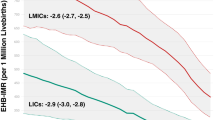Abstract
Kernicterus, a preventable injury to the brain from severe neonatal jaundice, has re-emerged in the United States as a public and societal health concern. Kernicterus, in its usually recognized form, causes devastating disabilities, including athetoid cerebral palsy and speech and hearing impairment. This condition not only ranks amongst the highest cost per new case (per CDC’s Financial Burden of Disability study, 1992), but also results in profound and uncompromising grief for the family and loss to siblings of healthy, talkative playmates. And for the child with kernicterus (usually remarkably intelligent, but trapped in an uncontrollable body), grief and frustration are enormous. In 2001 national healthcare organizations, including Centers for Disease Control (CDC), the Joint Commission for the Accreditation of Healthcare Organizations (JACHO) and the American Academy of Pediatrics (AAP) issued alerts to all accredited hospitals and public health professionals in the United States that all healthy infants are at potential risk of kernicterus if their newborn jaundice is unmonitored and inadequately treated. The re-emergence of kernicterus in the United States is the result of interacting phenomena including (a) Early hospital discharge (before extent of jaundice is known and signs of impending brain damage have appeared); (b) Lack of adequate concern for the risks of severe jaundice in healthy term and near newborns; (c) An increase in breast feeding; (d) Medical care cost constraints; (e) Paucity of educational materials to enable parents to participate in safeguarding their newborns; and (f) Limitations within in healthcare systems to monitor the outpatient progression of jaundice. A multidisciplinary approach that encompasses both healthcare and societal needs should be evaluated at a national level for practical and easy to implement strategies. An approach that is based on principles of evidence-based medicine, patient-safety and family centeredness is presented in this article. These strategies should also be based on public awareness campaign such that the healthcare providers can attempt to achieve a “Zero Tolerance of Kernicterus” and thereby decrease both childhood disabilities and infant mortality within the community.
Similar content being viewed by others
References
Johnson LH, Brown AK, Bhutani VK. System-based approach to management of neonatal jaundice and prevention of Kernicterus.J Pediatr 2002; 140:397–386.
Johnson L. Hyperbilirubinemia in the term infant: When to worry, when to treat.NY State J Med 1991; 91:483–489.
Sentinel Event Alert. Kernicterus Threatens Healthy Babies. www.JCAHO.org. Issue 18, April, 2001.
A National Framework for Healthcare Quality Measurement and Reporting: A Consensus Report. National Quality Forum http://www.qualityforum.org
Bhutani VK, Johnson L, Sivieri EM. Predictive ability of a predischarge hour-specific bilirubin for subsequent significant hyperbilirubinemia in healthy term and near-term newborns.Pediatrics 1999; 103:6–14.
Stevenson DK, Fanaroff A, Maiseis Jet al. Prediction of hyperbilirubinemia in term and near-term newborn infants.Pediatrics 2001; 108:31–39.
American Academy of Pediatrics Practice Parameter: Management of hyperbilirubinemia in the healthy term newborns.Pediaitrics 1994; 94: 558–565.
AAP Subcommittee on Neonatal Hyperbilirubinemia, Jaundice and Kernicterus.Pediatrics 2001; 108: 763–765.
Soorani-Lunsing I, Woltil A, Hadders-Algra M. Are moderate degrees of hyperbilirubinemia in healthy term neonates really for the brain?Pediatr Res 2001; 50: 701–705.
Maisels MJ, Newman TB. Bilirubin and Neurologic DysfunctionDo we need to change what we are doing?Pediatric Research 2001; 50: 677–679.
Hintz S, Stevenson DK. Just when you thought it was safe.Pediatric Research 2001; 50: 674–676.
Bhutani VK. Neonatal hyperbilirubinemia and Risk of Subtle Neurologic Dysfunction.Pediatric Research 2001; 50: 679
Poland RL.Commentary J Pediatr 2002; 140: 385–387.
Newman TB, Klebanoff M. Neonatal hyperbilirubinemia and long-term outcome: Another look at the collaborative perinatal project.Pediatrics 1993; 92: 651–657.
Newman TB, Xiong B, Gonzales VM, Escobar GJ. Prediction and prevention of extreme neonatal hyperbilirubinemia in a mature health maintenance organization.Arch Pediatr Adolesc Med 2000; 154:1140–1147.
Johnson L, Bhutani VK. Guidelines for the management of the jaundiced term and near-term infant.Clin Perinatol 1999; 25: 555–574.
Bhutani VK, Gourley GR, Kreamer BL, Dalin C, Alder SA, Johnson L. Non-invasive measurement of total serum bilirubin using a multiwavelength spectrophotometry in multiracial newborn population.Pediatrics 2000; 106:17–26e.
Maisels MJ, Kring E. Transcutaneous bilirubinometry decreases need for serum bilirubin measurement and saves money.Pediatrics 1997; 99:599–601.
Bhutani VK, Johnson LH. Jaundice technologies: prediction of hyperbilirubinemia in term and near-term newborns.J Perinatol 2001; 21: S76–82.
Ahlfors CE. Criteria for exchange transfusion in jaundiced newborns.J Pediatr 1994; 93:488–494
Kappas A, Drummond GS, Valaes T. A single dose of SnMesoporphyrin prevents development of severe hyperbilirubinemia in glucose-6-phosphate dehydrogenasedeficient newborns.Pediatrics 2001; 108:1–6.
Martinez JC, Garcia HO, Otheguy LE, Drummond GS, Kappas A. Control of severe hyperbilirubinemia in full term newborns with the inhibitor of bilirubin production Sn-mesoporphyrin.Pediatrics 1999; 103:1–5.
Bhutani VK and Johnson LH. System-based approach to the management of newborn jaundice to prevent kernicterus.Hot Topics in Neonatology (Ross Products, Abbott Laboratories) in Kernicterus. Washington, DC, 2001.
Author information
Authors and Affiliations
Corresponding author
Rights and permissions
About this article
Cite this article
Bhutani, V.K., H. Johnson, L. Newborn jaundice and kernicterus—health and societal perspectives. Indian J Pediatr 70, 407–416 (2003). https://doi.org/10.1007/BF02723615
Issue Date:
DOI: https://doi.org/10.1007/BF02723615




